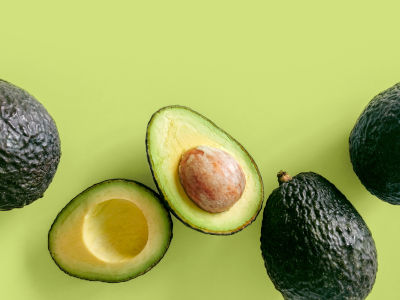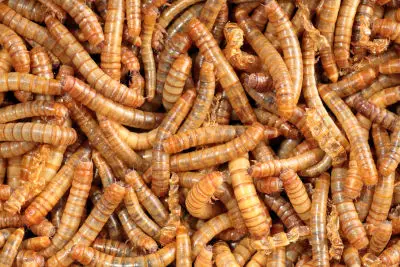What Eats Bearded Dragons? (Predators, Defensive Tricks)
If you are interested in the predators of a Bearded Dragon (Click here to learn 3 bid mistakes some Bearded Dragon owners make, and how you can avoid them), you are in the right place. This was something that had me thinking and I was keen to share my research with you today.
What Eats Bearded Dragons? Bearded dragons can be eaten by birds of prey, snakes, foxes or even pet cats. They do however have a good line of defence to deter any of these predators such as its spikey head or inflating its throat to intimidate its enemy.
| Are these foods dangerous for your Beardie? | |
| Avacado? Click here to learn, from this guide, if this food is dangerous |  |
| Superworms? Click here to learn, from this guide, if this food is dangerous |  |
So, these are the predators. But let me now explain exactly how they defend themselfs, how they have adapted to their environment to survive and fend off their enemies, and more.
What are a bearded dragons natural predators?
In this section I’m going to discuss all of the predators of a bearded dragon. This is while it is a wild animal in its natural habitat.
There are a number of predators for the bearded dragon including the following: birds of prey, snakes, pythons, foxes and cats.
In addition to this, there is also goannas (these are lizards). And, believe it or not, they are even sometimes hunted by their own kind. Meaning bearded dragons will attack other bearded dragons.
How does a bearded dragon protect itself from these predators?
One of their most subtle defensive mechanisms that that use against their Predators is changing their colour. They can adapt their colour based on their environment or surroundings.
Changing Colour
For example, in a sandy or Rocky area, you will find different colour variations of bearded dragons. So, you may find a more yellowish colour bearded dragon in a sandy location in the world.
Another self defensive move that they use is by making them self appear to be a lot bigger than they are. In particular, they use their “beards”. Hence the reason why they’re called the “bearded dragon”.
Inflate Their Throat
What they do is inflate their throat to make their head area look a lot bigger than it is. This is to intimidate their predators. This is in the hope that it will make them think twice about attacking. Sometimes they even make their beard turn black as they do it.
Flash Their Spikes
Other things that they use is the spikes on their head. In reality, these spikes are really not that prickly or dangerous. If you actually put your hand on it you would know what I mean.
However, they are the perfect deterrent from predators. Just the sight of it makes them think it’s a risk make them think twice about attacking.
What Adaptions do Bearded Dragons have?
In this section, I’m going to talk about adaptions that the bearded dragon has adopted. It is essentially how they have evolved to deal with dangers or challengers of their environment. This has helped them survive in the wild.
Social & Communication
Firstly I will discuss some of their social and communication type adaptions. One of them is “waving their hands”. Which is a show to the enemy a sign of submission.
In addition to this, one of the more commonly known actions, is his “head bobbing”. This is typically associated with a challenge directed at an opposing lizard. Basically telling them to back off.
Climbing Ability
Other Adaptions include their climbing ability. Which is used in two ways: one for survival and one for temperature control. For survival they sometimes climb onto high rocks to avoid their prey.
As for temperature control, they are known to climb to high spots so that they can bask in the sun, so they can get the necessary sun rays, which helps them generate vitamin D.
In addition to this, they also have the ability to dig burrows. This is so that they can actually avoid the heat when it gets too much for them. This is so they have the ability to enjoy the heat but can escape and hide when necessary.
So what does a bearded dragon actually eat?
Now I will discuss the bearded dragons eating habits. Bearded dragons are omnivores, meaning that they eat a combination of bugs, vegetables and fruit. However, depending on what stage of it’s life cycle, this split of bugs and vegetables can vary quite a lot.
Young Bearded Dragons Diet
As young baby bearded dragons you will often find that the majority of their food intake is insects. They may even have up to 80% bugs and the remaining 20% will be plants (Click here to see why Aloe Vera is not a good plant for your Beardie to eat) and vegetables.
Adult Beardies Diet
Adults on the other hand will be almost the complete opposite, with the majority of their diet being plant or vegetable based. You may notice that they may even only have about 20% of bugs.
If you are interested to know exactly what kind of veg and insects you can feed your bearded dragon. I will list a few of these.
Firstly vegetables and fruit that they consume: these vegetables can be cucumber, radishes, onions. And for fruit an example would be apples, blueberries, cranberries, etc.
Here is a few examples of the insects that they typically eat: A lot of different types of worms for example, Wax worms, super worms, earth worms, crickets, roaches, etc.
Be careful of Household Insects
However, please make sure that you do not just feed them any type of bug that you find around the house. Although this may sound like a pretty good way of dealing with your pest control problem, it could actually be detrimental to your pet. It could also cost you in vet bills when you’ve got a sick bearded dragon to deal with.
The problem is you do not know where these insects or a bugs, around your house, has been. It may even have parasites or harmful bacteria, which could infect your bearded dragon.
Related Questions:
Q. What diseases can affect your bearded dragon?
One of the biggest issues that affect bearded dragons is dehydration, unfortunately some people are led to believe that they do not need to provide that much water for their bearded dragons.
This misconception is because they’re naturally from a desert area in their natural habitat. however this is not the case and they do need to be hydrated correctly.
Symptoms of this problem would be if you notice that your bearded dragon is drinking a lot when you present the water to it. Almost as if it’s gasping for water. Secondly you may see that it’s acting a bit lethargic and not behaving properly.
Other signs you may notice is its skin appearing to be wrinkled. If you suspect it has dehydration it is a good idea to take him to your local vets just to get him checked out.
Impaction
Impaction is when your bearded dragon consume something that it cannot or finds very difficult to digest. A classic example of this is substrate, in particular the particle based substrates, such as sand.
This is why some people have reservations about using sand as substrate for these reasons. Symptoms you may notice include your bearded dragon struggling to poo, foreign objects in it’s faeces, lack of appetite, etc. If you suspect this its best that you should immediately visit your vet.
Secondly you can also consider providing a warm bath for the bearded dragon and gently rubbing his belly. The idea behind this is it supposed to induce or stimulate the bowel movement.
The best advise is to get your vet to help you. They may be able to prescribe something to help him get past this. And also give you advice on how to prevent this happening in the future. Maybe it could be as simple as changing to a good substrate (Click to see the best).
Yellow fungus disease?
This disease shows signs of yellow patches on your lizard. It is often caused by poor living conditions. May be due to neglected enclosures. Maybe they have not been properly maintained.
The problem with this disease, it’s highly contagious. So, if you have more than one bearded dragon in the enclosure, you will definitely need to separate them. This is to keep the others safe.
The first thing you need to do is to take your bearded dragon to the vet to get some advice. Secondly, you need to make sure that you keep it quarantined, if it’s not on it’s own already. Going forward you need to make sure that you have or improve the cleanliness of their living conditions. Also discover if bearded dragons enjoy human contact? (Click to see).